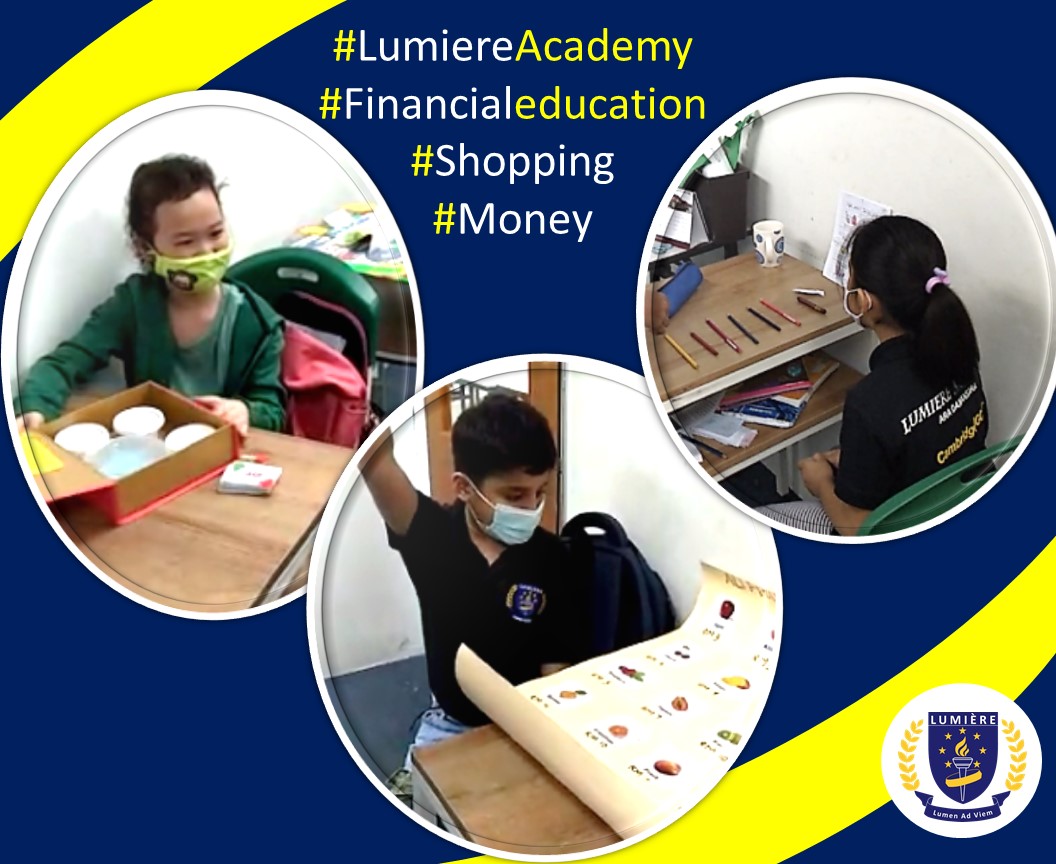The following article was written with reference to Lumiere Academy’s daily classroom lessons and other relevant sources.
It’s never too early to learn about buying and selling things. The key ingredient in the process of buying and selling, apart from the merchandises themselves, is nothing but money. It is important to start teaching kids how to be money savvy. In fact, learning how to handle finances is for everyone across different age groups. We would like to share with all parents out there about the good way to educate children on how to be financially smart.

Setting goals
As parents, we all know that our children want something every once in a while, whether it’s a toy, clothing, or a gadget. They may have their pocket money to get what they want. However, there comes a time when their money is not enough to get what they want. This is where kids learn to set goals. Very Well Family states that as early as preschool, children should be taught that money is a scare resource. One has to practice hard work and diligence to achieve his or her financial goal. Thinking about the wish list of what kids want can be the first step in goal setting. The next step would be to guide them to organise their wish list in the order of importance. What are want and what are needs? Which ones take more priority? Can I still live well without buying certain things? Which are the things that I really need without which I won’t be able to survive? Do I have alternative cheaper choices so that I can save some money? All these questions sound basic but apply very well into adulthood.
Saving
Apart from the usual buying and selling activities, children should be taught on saving. The saving can come from paying less for a merchandise, buying a cheaper alternative, or just simply saving by not buying at all. Saving as a source of emergency fund is a great idea to share. According to Bank Negara’s survey, 75% of Malaysians do not have savings more than RM1,000. It is always to share this knowledge to the kids as young as preschool age.
Online shopping
In the current internet age, kids need to be alerted on various aspects of online shopping. Online shopping frauds are very common and students need to be aware of official sources of information. Students should know where they can access information regarding to fraudulent services, fraudulent Pricing, internet transaction fraud, price tag, Scams Scratch and Win and so on. Online shopping does open up a window of opportunities for people from all walks of life to trade over the internet. We need to educate kids on the impact of online shopping on finance management. Some of the useful resources can be found here. Let kids learn to evaluate and compare online shopping with regular shopping.
Earning
Children should also be taught not to rely on pocket money forever. When they reach certain age, there is a lot of room for them to earn their own income. Children from a family having family business best learn about earning money with their own sweat. The tech-savvy teenagers nowadays are more much advance than their parents in monetising their time online. However, as educators we need to be on top of all these by educating them about legal and illegal platforms, being safe and responsible online.

Allocating funds
The key question – there are so many things we need spend our money for. How do we categorise different needs? We are talking about fund allocation here. Traditionally, children are taught to keep their money into three money jars. The Balance suggests introducing three money jars for for saving, spending, and sharing. The savings jar is to set aside a room for kids to achieve their goal; the spending jar is for small purchases such as favourite toys and a gadget, and donation money goes into the sharing jar which teaches them how to be socially responsible to take care of those in needs.
Opportunity Cost
To the secondary students, the concept of opportunity cost is sometimes difficult to be defined in words. However, through real life interaction, it is not difficult to show to the kids that when they use up their available funds on a particular product, you would lose out on the possible benefits that a different product offers – that is the basic definition of opportunity cost. Bankaroo previously noted that this basic financial concept is lost on many children because of their impulsive nature of wanting instant gratification. They are not matured to understand the real value of most things. Expect that your child will make mistakes along the way and help them understand why buying product A would mean that he/she is giving up product B or C. What is the consequence of giving up product B or C for the sake of product A?
For more information on Lumiere Academy Homeschool Centre, please contact us at +601121872197. Click here for our location.

